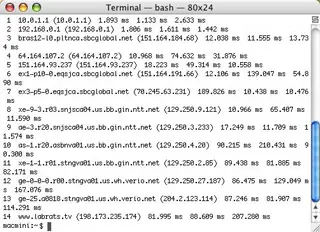LabRats #089: How to keep your network healthy
The word ‘ping’ comes from the sonar: that’s what operators hear when it returns a signal. And that is also the word to describe a process that we can use to see whether another machine on the network is up and running or, whether we are connected to that machine through a network at all, so we can work together. For the uninitiated: sonar (SOund NAvigation and Ranging) is equipment that sends sound signals to detect other objects.
What you are actually doing is finding out whether your machine sees your router You’ll have to know your router’s address, and here’s how to do it. You can also check out your manual.
The beautiful thing is – when using a ‘ping’ command on the web – you don’t have to have an IP address, the site’s name will suffice. In any case, ‘ping’ is a useful tool with many other diagnostic options, too.
To find out why, for example, a web site doesn’t respond fast enough (or at all) after we pinged and the result seemed satisfactory, we can use a trace route command. It checks the signal’s path through the Internet and can tell us what is wrong and where.
In this installment of LabRats, Andy Walker and Sean Carruthers tell us that these diagnostic tools work both in Windows and Mac
environments and explain how to use them, when, and what to look for.

